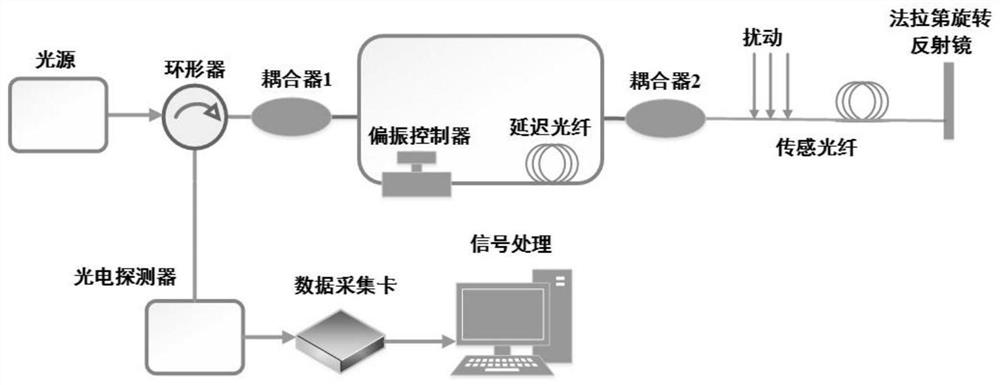Signal identification method of optical fiber perimeter defense system based on improved FB feature and GRNN network
An optical fiber perimeter, signal recognition technology, applied in the field of signal recognition, can solve the problems of few recognition types, too ideal recognition conditions, complex training process, etc., to meet real-time and accuracy, real-time efficient signal recognition, and simple model training. Effect
- Summary
- Abstract
- Description
- Claims
- Application Information
AI Technical Summary
Problems solved by technology
Method used
Image
Examples
Embodiment 1
[0035] In this instance, see figure 1 , a signal recognition method of an optical fiber perimeter defense system based on the improved FB feature and GRNN network, including the following steps:
[0036] Step 1, collecting several output signals of different types of sensing events of the fiber optic perimeter defense system in advance;
[0037] Step 2, using an endpoint detection algorithm to obtain effective signal segments of the collected signal;
[0038] Step 3, extract the improved FB feature for each signal segment, as a training sample, and use its signal type as the corresponding output label;
[0039] Step 4, train the GRNN through the training samples and their labels, adjust the parameters, and generate the optimal model;
[0040] Step 5, also perform endpoint detection on the newly collected signal to be identified, obtain its effective signal segment, and extract the improved FB feature of the signal segment as a test sample;
[0041] Step 6, use the generated...
Embodiment 2
[0044] This embodiment is basically the same as Embodiment 1, especially in that:
[0045] In this example, see figure 2 , the extraction of improved FB features described in step 3 needs to be achieved through the following steps:
[0046] 1) Normalize the signal fragments to eliminate the amplitude difference of different signals;
[0047] 2) Windowing the normalized signal segment frame by frame, so that both ends of each frame signal are attenuated to zero;
[0048] 3) Calculate the power spectrum of the signal segment;
[0049] 4) multiply the power spectrum of the signal segment with the band-pass filter bank formed by 26 triangular filters under the Mel scale, to obtain the signal power under the Mel filter bank;
[0050] 5) Calculate the root mean square of the signal power under each filter to obtain the effective value of the signal power, and form a one-dimensional vector containing 26 elements, which is the improved FB feature.
[0051] In this embodiment, by ...
Embodiment 3
[0053] This embodiment is basically the same as Embodiment 1, especially in that:
[0054] In this embodiment, in step 1, simulate and collect the output signals corresponding to the sensing events of no disturbance, shaking, knocking and running of the fiber optic perimeter defense system under three weather conditions: sunny day, rainy day and windy day.
[0055] In this embodiment, the output signals corresponding to the sensing events under the three weather conditions of sunny day, rainy day and windy day are collected as the original signal of the training data, so as to realize real-time and efficient signal recognition under noise interference.
PUM
 Login to View More
Login to View More Abstract
Description
Claims
Application Information
 Login to View More
Login to View More - R&D
- Intellectual Property
- Life Sciences
- Materials
- Tech Scout
- Unparalleled Data Quality
- Higher Quality Content
- 60% Fewer Hallucinations
Browse by: Latest US Patents, China's latest patents, Technical Efficacy Thesaurus, Application Domain, Technology Topic, Popular Technical Reports.
© 2025 PatSnap. All rights reserved.Legal|Privacy policy|Modern Slavery Act Transparency Statement|Sitemap|About US| Contact US: help@patsnap.com



